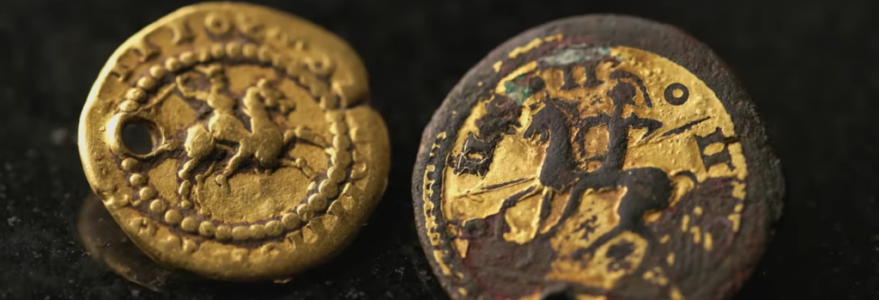Germanic coinage dates back 200 years earlier than it was commonly believed. The international team, including researchers from the University of Warsaw, discovered coins produced by Germanic societies in the late 3rd century. The IMAGMA research results are presented in the video material available on YouTube.
The international team of archaeologists, numismatists, chemists and physicists has investigated the early European coinage. The project named “IMAGMA: Imagines Maiestatis. Barbarian Coins, Elite Identities and the Birth of Europe” has been realised by the researchers from the University of Warsaw and the German Archaeological Institute (Deutches Archäologisches Institut) with help of Ukrainian scholars.
The researchers determined the contemporary western part of Ukraine to cradle all the forms of Germanic coinage. Since the middle of 3rd c. AD, the Goths were mass-striking and casting their own coins of gold and silver, which, in fact, were imitations of the Roman coins.
“Ciphers from the Past – IMAGMA”
Results of the research are presented in the video material entitled “Ciphers from the Past – IMAGMA”, which is available on YouTube. “It used to be widely considered that the beginnings of Germanic coins date back to the late 5th and 6th centuries when Germanic societies were settling down on the territory of the Western Roman Empire. However, our findings explicitly indicate that such speculations were wrong,” Aleksander Bursche, project coordinator and professor of the Faculty of Archaeology, University of Warsaw, explained in the video. “The Germanic coinage dates back as early as the late 3rd century and should be located within the western territory of Ukraine”.
“Szyfry z przeszłości – IMAGMA” in Polish >>
”Ciphers from the Past – IMAGMA” in English >>
The material was produced under the “Initiative of Excellence – Research University” Programme, action of III.3.2 Promotion of scientific research in the public domain. The IMAGMA project was funded by the National Centre of Science and the German Research Community (Deutsche Forschungsgemeinschaft).
More on the IMAGMA project website >>



